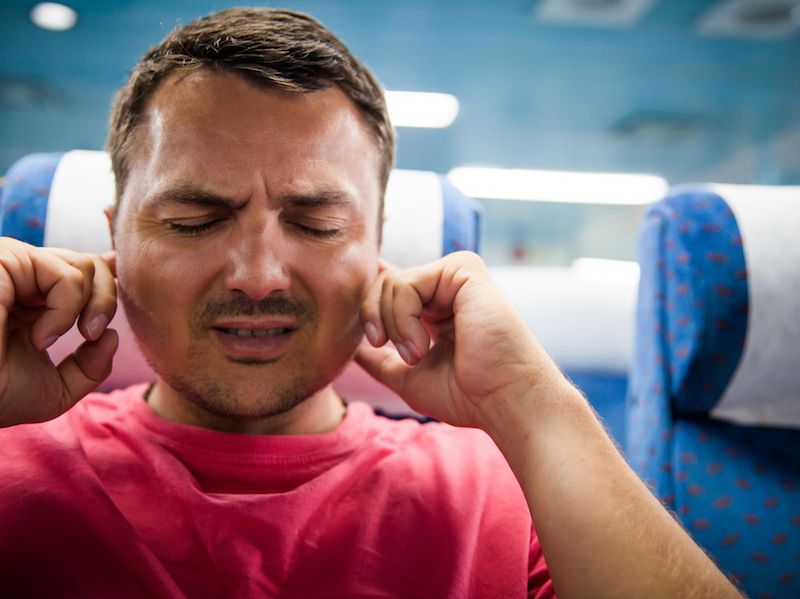
Have you ever been on an airplane and you start to have issues with pressure in your ears? Where your ears suddenly feel blocked? Someone you know may have suggested chewing gum. And while that works sometimes, I bet you don’t know why. Here are a few tricks for popping your ears when they feel blocked.
Pressure And Your Ears
Turns out, your ears are rather wonderful at regulating air pressure. Thanks to a beneficial little piece of anatomy called Eustachian tubes, the pressure of the outside world is able to be regulated, adjusted, and equalized inside of your ears. Usually.
There are some circumstances when your Eustachian tubes may have difficulty adjusting, and irregularities in air pressure can cause problems. There are occasions when you may be suffering from an unpleasant and often painful condition known as barotrauma which occurs when there is an accumulation of fluid behind the ears or when you’re sick. This is the same situation you feel in small amounts when flying or driving around really tall mountains.
You normally won’t even notice small pressure differences. But you can feel pressure, pain, and crackling if your Eustachian tubes aren’t functioning properly or if the pressure changes are abrupt.
What is The Source of That Crackling?
Hearing crackling in your ears is rather uncommon in a day-to-day setting, so you may be understandably curious about the cause. The crackling noise is often compared to the sound of “Rice Krispies”. Normally, air going around obstructions of the eustachian tubes is the cause of this crackling. The cause of those obstructions can range from congestion to Eustachian tube malfunction to unregulated changes in air pressure.
How to Equalize The Pressure in Your Ears
Typically, any crackling will be caused by a pressure difference in your ears (particularly if you’re on a plane). In that situation, you can try the following technique to equalize ear pressure:
- Yawning: For the same reason that swallowing can be effective, try yawning. (if you can’t yawn whenever you want, try thinking about someone else yawning, that will normally work.)
- Valsalva Maneuver: If you’re still having problems, try this: pinch your nose close your mouth, but instead of swallowing, try blowing out (don’t let any air get out if you can help it). Theoretically, the pressure should be equalized when the air you try to blow out passes over your eustachian tubes.
- Frenzel Maneuver: Okay, try this tactic. With your mouth closed and your nose pinched, try making “k” sounds with your tongue. You can also try clicking to see if that works.
- Try Swallowing: The muscles that activate when you swallow will force your eustachian tubes to open, equalizing the pressure. This, incidentally, is also the reason why you’re told to chew gum on an airplane; the chewing causes you to swallow, and swallowing is what causes the ears to equalize.
- Toynbee Maneuver: This is really just a fancy way to swallow. Pinch your nose (so that your nostrils are closed), close your mouth, and swallow. Often this is a bit simpler with water in your mouth (because it makes you keep your mouth shut).
Medications And Devices
If using these maneuvers doesn’t do the trick, there are devices and medications that are specifically produced to help you handle the ear pressure. Whether these techniques or medications are the right choice for you will depend on the underlying cause of your barotrauma, and also the extent of your symptoms.
Sometimes that might mean special earplugs. In other cases, that might mean a nasal decongestant. Your scenario will determine your remedy.
What’s The Trick?
The real trick is figuring out what works for you, and your eustachian tubes.
But you should make an appointment for a consultation if you can’t get rid of that feeling of obstruction in your ear. Because hearing loss can begin this way.
